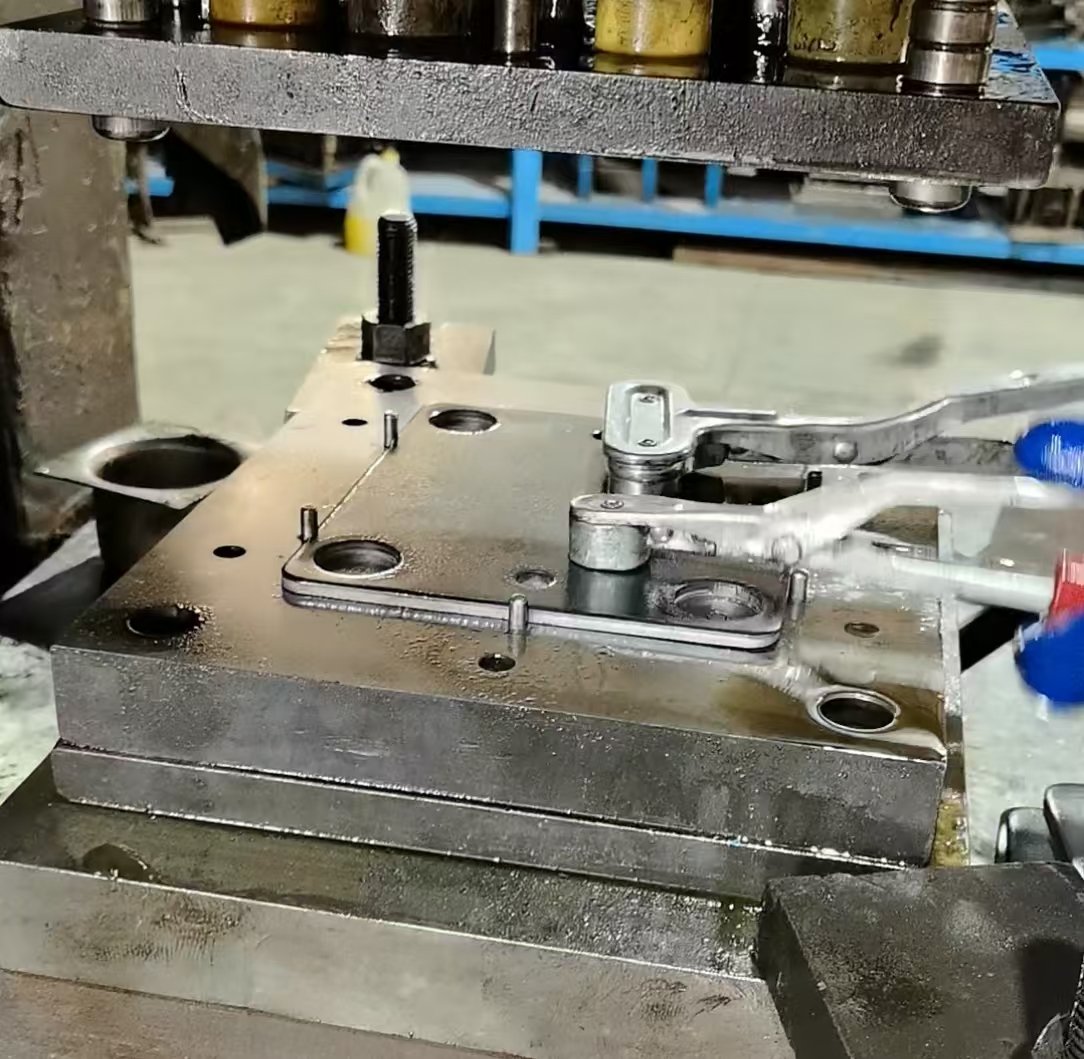
In-depth analysis of metal stamping product mold materials and surface treatment
In the highly competitive field of metal manufacturing, metal stamping is an important processing technology that is widely used in various industries. Kailai Machinery has been established since 1996. For small companies focusing on metal customization, continuous exploration and mastering of key technologies for metal stamping is the key to gaining a foothold and developing in the market. Today, we will discuss in depth how to accurately select materials and perform surface treatment when making molds for metal stamping products of different materials.

Selection of metal stamping mold materials
Metal stamping products of different materials have very different requirements for molds. When selecting mold materials, multiple factors need to be considered comprehensively, including the material of the stamping product, production batch, precision requirements, and service life of the mold.
Stamping low-carbon steel and ordinary carbon steel products
When stamping common materials such as low-carbon steel and ordinary carbon steel, due to their relatively low hardness, the wear resistance requirements for the mold are not particularly demanding. In this case, we can choose a more affordable mold steel, such as Cr12MoV. This type of mold steel has high hardness and wear resistance. After heat treatment, the hardness can reach 58-62HRC, which can meet general stamping needs. At the same time, it has good hardenability and small heat treatment deformation, which is suitable for making molds with complex shapes. For some stamping products with small production batches and not particularly high precision requirements, the use of Cr12MoV mold steel can effectively control costs and improve production efficiency.
Stamping stainless steel products
Due to its special chemical composition and high strength, stainless steel wears the mold more during the stamping process and is prone to problems such as sticking. Therefore, when stamping stainless steel products, the mold material needs to have higher hardness, wear resistance and anti-sticking properties. ASP23 powder high-speed steel is a good choice. Its hardness can reach 64-66HRC and has excellent wear resistance and red hardness. Even when working at high temperatures, it can maintain good performance and effectively reduce mold wear and deformation. In addition, surface coating treatment, such as titanium (TiN) coating, can be used to further improve the hardness and lubricity of the mold surface, reduce the friction between stainless steel and the mold, reduce sticking, and extend the service life of the mold.
Stamping non-ferrous metal products (such as aluminum alloy, copper alloy)
Non-ferrous metals such as aluminum alloy and copper alloy have the characteristics of soft texture and good plasticity, but they are prone to scratches and scratches during the stamping process. For stamping dies for such products, die steel with good polishing performance and corrosion resistance is usually selected, such as NAK80 pre-hardened steel. NAK80 has uniform hardness, up to 37-43HRC, and excellent mirror polishing performance, which can ensure that the surface finish of the stamped non-ferrous metal products is high and free of scratches. At the same time, it also has a certain degree of corrosion resistance, and can work stably in a humid environment to ensure the service life of the mold.
Surface treatment of metal stamping dies
In addition to selecting the right mold material, surface treatment is also an important means to improve mold performance.
Nitriding treatment
Nitriding treatment is a common mold surface treatment method, which can form a nitride layer with high hardness and good wear resistance on the mold surface. Through nitriding treatment, the hardness of the mold surface can be increased to HV900-1200, effectively enhancing the wear resistance and corrosion resistance of the mold. At the same time, the nitriding layer also has good lubricity, which can reduce the friction during the stamping process, reduce the adhesion between the mold and the stamping part, and improve the surface quality of the stamping part. Nitriding treatment is suitable for various mold steel materials, especially for some molds with high requirements for wear resistance, such as molds for stamping high-strength steel. Nitriding treatment can significantly improve their service life.
Hard chrome plating
Hard chrome plating is to plate a layer of hard chrome on the surface of the mold. The chrome layer has a high hardness of up to HV800-1000, and has good wear resistance, corrosion resistance and bright appearance. The mold surface after hard chrome plating is smooth, which can effectively reduce the friction during the stamping process and prevent scratches on the surface of the stamping part. In addition, the hard chrome layer can also fill the tiny defects on the mold surface and improve the precision and surface quality of the mold. Hard chrome plating is often used for some stamping molds with high requirements for surface finish and precision, such as electronic component stamping molds, automotive interior parts stamping molds, etc.
PVD (Physical Vapor Deposition) Coating Treatment
PVD coating treatment is an advanced surface treatment technology that forms a uniform and dense coating by evaporating and depositing metal or compounds on the mold surface under high temperature and vacuum environment. Common PVD coatings include TiN (titanium nitride), TiC (titanium carbide), CrN (chromium nitride), etc. These coatings have extremely high hardness, wear resistance and chemical stability, which can significantly improve the service life of the mold and the quality of stamping parts. For example, the hardness of TiN coating can reach about HV2000, and the color is golden. It not only has good wear resistance, but also plays a decorative role. PVD coating treatment is suitable for various high-end stamping molds, such as precision stamping molds, high-speed stamping molds, etc., which can meet the high performance and high precision requirements of modern manufacturing industries for molds.
As a professional metal custom parts manufacturer, Kailai Machinery is well aware of the importance of mold material and surface treatment to the quality of metal stamping products. In the future development, we will continue to uphold the spirit of professionalism and innovation, and continue to explore and apply new mold materials and surface treatment technologies to provide customers with better quality and more efficient metal stamping solutions. Whether it is metal stamping or the entire metal manufacturing business, we are committed to doing the best, growing together with our customers, and creating more value in the field of metal manufacturing.

